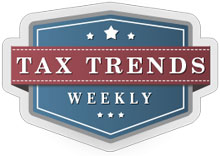1950’s Tax Rates Won’t Work Today
With income taxes rising on the wealthy in 2013, commentators have debated whether the tax hikes will discourage economic growth. Some supporters of the tax hikes point out that the income tax rates that existed in the 1950’s were much higher than they are today, and yet that decade was one of prosperity and strong economic growth.
But this view is flawed. While it is true that the highest marginal federal income tax rate was 91 percent in the 1950’s, that fact must be placed in context. First, 91 percent was the highest marginal tax rate, but it applied only to very high-income taxpayers, and only to that percentage of income over a threshold amount. Second, the nominal rate of 91 percent was different than the effective rate, which takes into account tax relief such as credits, deductions, capital gains preferences, and exemptions. (Confusion over nominal and effective rates is often seen today in debates over the corporate tax rate, which nominally is 35 percent but is effectively much lower for almost all corporations.) Marc Linder, a professor at the University of Iowa, has estimated that millionaires in 1953 paid an effective tax rate of “only” 49 percent. An article in Tax Notes magazine found that people earning over $100,000 a year in the 1950’s (roughly millionaires today) paid just 5 percent of the taxes collected in the U.S that decade.
Finally, the idea that the U.S. could prosper today with sky-high income tax rates on the wealthy overlooks a huge development since the 1950’s: increased foreign competition. In the 1950’s, Russia, Japan, and Europe were recovering from the devastating effects of World War II, and today’s emerging market economies were miniscule. Today, countries all over the globe compete for corporations’ business and there is a growing trend of the wealthy expatriating to avoid taxes. In light of this competition, raising federal income tax rates to anything close to 91 percent would result in a massive exodus of capital to other countries.

